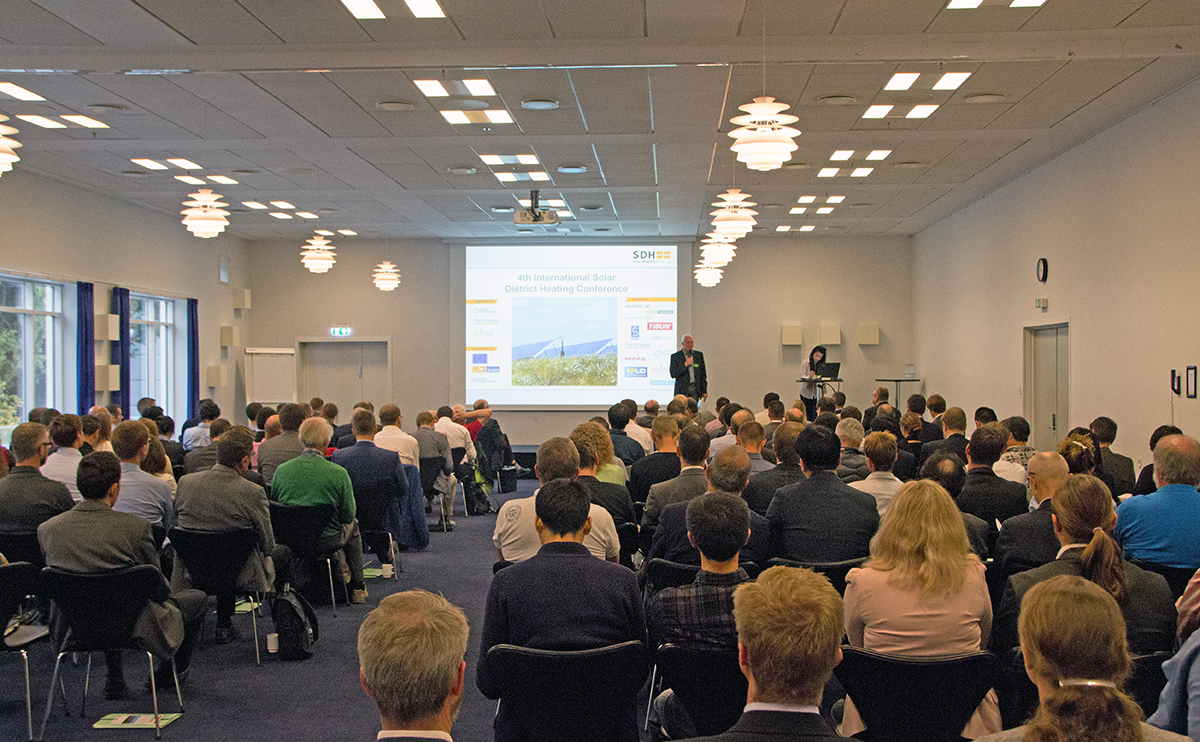Right on time for the opening of the 4th International Solar District Heating Conference in Billund, the host country Denmark reached a magical barrier: more than one Million square meters solar collectors are now installed there. The Danish District Heating Association counted exactly 1 003 024 square meters at the beginning of the Conference on Wednesday, 21st September, in a total of 85 district heating networks supported by solar thermal energy.
180 international experts from 20 countries – also this is a record number – have met for the 4th International Solar District Heating Conference in order to benefit from the experience of this leading country. They were not only impressed by the top-class presentations and technical tours to some of the world largest solar collector plants, but could also admire a reduced-scale model of such a plant in Legoland Billund, where the Conference took place. This solar collector plant made in Lego bricks represents the plant from Braedstrup, with which the world-wide unique boom of the Danish XXL solar thermal plants began, approximately ten years ago.Large-scale solar thermal plants can compete today with all forms of fossil fuels. The sector reaches heat prices from 3 to 5 cents pro kWh, provided that the plant is large enough. And they are always getting larger: in Silkeborg in Central Denmark the new record plant is currently under construction with 156 000 m² and a nominal power of 110 Megawatt. But the world’s market leader Denmark is not the only country in which solar thermal plants in such dimensions are developing. In the Austrian city of Graz, plans are being made for a plant of even more impressive dimensions: 450 000 m² solar thermal collectors should supply the district heating network of the second largest city of the Alpine Republic to cover 20% of the heat demand.
Also political spheres have become aware of the importance of renewable district heating all around Europe. “District Heating and Cooling are now an important topic in Brussels to push renewable energies and efficiency technologies.” said Paul Voss, director of the European District Heating Association Euroheat & Power. Unlike in some earlier papers from the EU, they play an important role in the recently published Heating and Cooling Strategy until 2030. This also appears in the most recent budget planning for EU subsidy programs.
For the organizers of the 4th International Solar District Heating Conference, the Danish District Heating Association, the engineering office PlanEnergi and the German Steinbeis Research Institute Solites, the economical feasibility is currently not the main reason why the development of renewable district heating networks in Europe and the world is still so uneven. There are several well made subsidy programs at national level, in Germany, Italy, France and Austria, reports Thomas Pauschinger from Solites. Outside of Denmark, the possibility of using solar heat for district heating networks is simply still not enough known. One of the barriers is administrative obstacles like finding and getting permission for adapted locations for building large collector fields. Pauschinger: “At the local level, there are three main problems: areas, areas and areas.”

This is not the case in Denmark, where the collector fields are mostly located in agricultural areas at the city’s borders. The solar thermal networks are mostly organized in cooperatives and realized without subsidies, thanks to the high taxes on fossil fuels, among other things. In Jelling, the local operator of the plant reported that the heat price for customers has decreased as a consequence of the installation of 15 000 m² solar collectors. This is the case in several other locations in Denmark. Jelling was, together with the recently extended 44 800 m² solar thermal plant of the City of Gram, aim of a technical tour in the framework of the international congress. Gram is currently the district heating network with the highest solar fraction. More than 50% of the yearly heat demand is covered by the sun. This is enabled by a pit thermal energy storage in which 122 000 m³ water are being heated up to 90°C during the summer.

If the experts who travelled to Billund are of course interested in such constantly increasing records, they also come to exchange on technical details and share experiences from colleagues from other countries, research institutes and companies which are being discussed really openly in this circle. The main topics are here longevity, energy efficiency and a reliable operation of such plants, said Pauschinger: „These details are the decisive factors for continuously reducing the costs of harvesting solar energy.”
The next opportunity for such a large and intensive exchange will arise in 2018 for the next edition of the conference in Austria.
Supported by:

